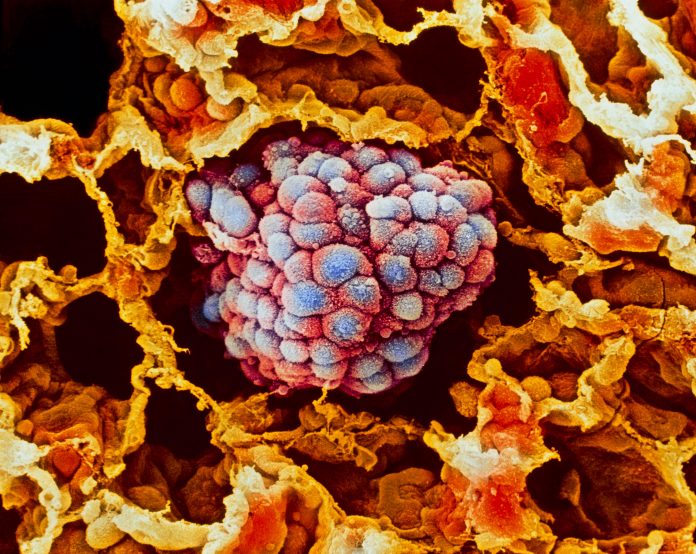
It has been more than 20 years since the first companion diagnostic was approved to identify the protein HER2 in breast cancer to target patients that would respond to the drug Herceptin. To say that much has changed since 1998 when this first approval was granted would be an understatement. In that time the classification of cancer has continued to evolve from one that names the organ of origin to those that classify cancer by specific genetic mutations present regardless of the primary tumor origin.
Likewise, the testing methods used for the development of companion diagnostics have also evolved from IHC and FISH to PCR, and now, increasingly, next-generation sequencing-based tests that can look for scores of mutations at once and potentially identify a number of different drugs that could be appropriate for prescribing to a patient.
In the U.S., the Food and Drug Administration recognized that the traditional model of companion diagnostic development that matched one test for one biomarker with one drug didn’t reflect the new world of molecular testing and drug development. At issue was the fact that in some cases there were multiple approved diagnostics to identify the same molecular marker, while likewise there were multiple approved drugs all within the same class of therapeutics addressing these same indications.
In some instances, this created a situation where not all therapies within a specific group or class of drug were included in all of the approved tests for the same markers. “FDA is concerned that the current situation is not optimal for patient care because a clinician may need to order a different companion diagnostic (i.e., one that includes other therapeutic products on the label), obtain an additional biopsy(ies) from a patient, or both, to have additional therapy treatment options,” the agency noted.
In response to this reality, in April 2020, after two years of development, the agency released new guidance whose purpose was to broaden access to patients of targeted cancer therapies while also allowing in vitro diagnostics that tested across a broad swath of molecular markers to be designated as a companion diagnostic for more than one drug and more than one indication.

The first single test to be approved as a CDx for multiple therapies was the Oncomine Dx Target Test from Thermo Fisher Scientific, which screened solid tumor samples for the indicated biomarkers for three therapy regimens for non-small cell lung cancer (NSCLC): the combination therapy of Tafinlar (dabrafenib) and Mekinist (trametinib), Xalkori (crizotinib), or Iressa (gefitinib).
The approval of Thermo’s NGS-based test in 2017 predated the new guidance by three years, but also opened the doors to a new path and new class of companion diagnostics—broad-based panels that tested for multiple markers in a single test for multiple drugs in multiple indications.
Enter NGS testing
These new considerations from the FDA for companion diagnostics coincide with cancer diagnostics developers increasingly turning to next-generation sequencing for their platform of choice while greatly increasing the number of genes on their testing panels from dozens to hundreds. These expansions have come as companies look to provide oncologists with comprehensive genomic profiling (CGP) of tumors to include mutations that are known to be actionable and help guide cancer therapy.
But, along the way, diagnostic companies recognized that having validated tests for such a broad array of molecular markers has made their tests prime candidates for pharma and biotech companies to leverage as CDxes—especially as the drug developers have sought expanded use of their approved drugs for additional indications, or as part of a combination therapy.
“I think it’s a very intriguing model,” said Charles Mathews, principal with ClearView Healthcare Partners a life sciences product strategy consulting firm. “I would have to say historically IVD companies have been well positioned to navigate the CDx space, because they have a clear regulatory approval pathway.”
Mathews noted that the opening for NGS-based testing comes as some traditional testing methods like FISH or PCR are becoming outmoded. “That’s great for a single-gene, single-drug model, but that’s not the world we are in right now. [Oncologists] want multiple things all at once.”
Two companies, among others, looking to fill this gap via NGS-based multi-marker testing are Foundation Medicine with both its solid tumor and liquid biopsy FoundationOne diagnostic, and Thermo Fisher Scientific, noted above with its Oncomine test.
According to Geoff Oxnard, vice president at Foundation Medicine—its FDA-approved test FoundationOne has already been approved as a CDx for a number of indications—the fact that the company’s tests were already being used by oncologist to inform treatment decisions was a strong starting place for it to move into the CDx realm.
“We also have a regulatory-grade backbone—that’s a good starting place,” Oxnard said, “and we can build off that in multiple directions. Partners come to us and say ‘we want to evolve our label in these ways.’ We have an asset that can accommodate that. We can also go to partners to say we have a new biomarker that we think fits the needs of their program. It’s a nice bi-directional relationship as a starting place.”

Thermo Fisher Scientific
According to Garrett Hampton, president, clinical sequencing and oncology at Thermo Fisher Scientific some of the movement toward broad-based testing developers as potential CDx partners stems from the “striking” increase in new, targeted therapies over the past few years.
“If you think about cancers, like non-small cell lung cancer, there are a verifiable number of drugs which can be matched against some of these molecular subtypes of lung cancer, so even though two lung cancers look the same under a microscope, they’re typically different,” said Hampton.
Further, he noted, with multiple therapeutic options for NSCLC and subsets of biomarkers indicating targeted therapies, the need to test across this breadth of markers outstrips traditional CDx testing platforms like PCR. “Using PCR, which might test for one, two, three, or four biomarkers at a time using very small pieces of tissue, you burn through that super quick,” he noted. “That means you need something like next-generation sequencing that can take a single sample and put it through these assays to get multiple answers at the backend to match the therapeutic with the patient.”
Headwinds for NGS-based CDxes
While NGS testing seems to have some advantages over older technologies, growth in this area could remain incremental for a few reasons. First among them is that while more targeted therapies than ever are gaining regulatory approval, there is also a trend of drug development toward even rarer forms of cancer. Pharma companies searching for patients with these less-common biomarkers need to screen more people to build an appropriate clinical trial cohort.

Vice President of Regulatory Affairs, Foundation Medicine
“For FMI, in order to validate our tests, we have the same problem,” noted Liz Mansfield, vice president of regulatory affairs at Foundation Medicine. “We have to screen a lot of samples before we can find ones that have the biomarker of interest, so it’s gotten a little bit more difficult to find the number of samples the FDA would like to see.” Other more complex biomarkers like tumor mutation burden (TMB) and microsatellite instability (MSI) have also proved problematic for the FDA, as test development in these areas is relatively new and different organizations have taken different analytical approaches to identifying them, she noted.
Another challenge faced by NGS-based CDx tests is access to the test themselves in markets around the world, since many NGS-based diagnostic companies run the diagnostics at their own facilities as opposed to using an existing infrastructure for the tests.
“I think the fundamental challenge with the NGS model is it’s not a kit model,” noted Mathews, saying that most CDXes that have come before are based on other testing platforms, like PCR, that have a large, worldwide, installed base at diagnostic labs around the world that allow for local testing. “I know Foundation Medicine is working on their localization model, but it is still harder as a lab versus a kit solution.”
Finally, even if NGS panels for companion diagnostics can tackle some of these testing headwinds related to their platform and getting enough data for rare biomarkers to gain regulatory approval, it will still take a shift in how oncologist practice to put these, and all CDxes, into their regular clinical protocols.
“In order to be able to increase the amount of testing, there’s a lot of influence we have to make across the stakeholder pool, whether it’s oncologists, pathologists, professional societies for treatment guidelines, and so on,” concluded Hampton.
“If you look several years ago, how many patient tumors were getting sequenced? It was roughly 5%. Fast forward to today, it may be 20% in developed countries, but we are really going to have to get up closer to 80%,” he continued. “You have to increase the number of patients that are being tested, who are then receiving these targeted therapeutic. If you want patients to have better outcomes overall, we have to go from that 20% to 80%.”











